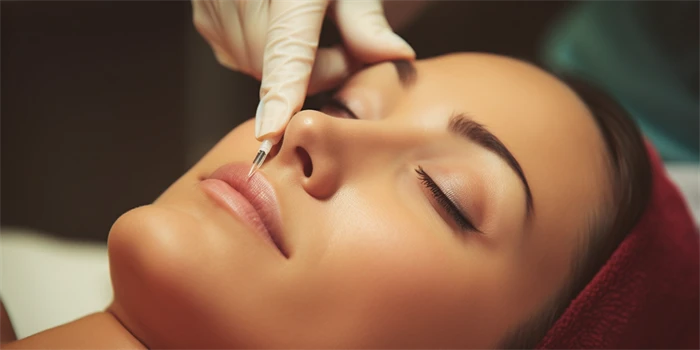Over the years, Botox injections have become increasingly popular as a non-surgical cosmetic treatment. Many individuals turn to this procedure in a bid to achieve a more youthful appearance or smooth out wrinkles. However, there have been instances where Botox injections have gone wrong, leading to undesirable outcomes. In this article, we will delve into the various aspects of Botox botched cases and explore the potential risks, side effects, considerations, alternatives, and more.

1. The Rise of Botox Injections
With the advancement in medical aesthetics, Botox injections have gained immense popularity. According to a survey conducted by the American Society of Plastic Surgeons, there has been a remarkable increase in the number of individuals undergoing Botox treatment in recent years. The allure of a quick, non-invasive procedure to enhance one's appearance has undoubtedly contributed to this rise.
However, it is crucial to recognize that Botox is a prescription medication and should only be administered by qualified professionals. It is not a one-size-fits-all solution, and there are certain considerations individuals must be aware of before opting for the treatment.
In one unfortunate scenario, a woman in her thirties experienced a severe reaction to Botox, resulting in temporary facial paralysis. This incident serves as a reminder that even seemingly routine procedures can have unforeseen consequences.
2. The Potential Risks and Side Effects
While Botox is generally considered safe when administered properly, there are associated risks and potential side effects. Common side effects include bruising, swelling, and occasional headaches. However, more severe complications can occur if the injection is not handled correctly.
In rare instances, individuals may experience drooping eyelids, blurred vision, or difficulty swallowing. These adverse effects often subside within a few weeks, but they can be distressing and impact one's quality of life in the meantime. It is therefore crucial to choose an experienced professional who understands the intricacies of facial anatomy to minimize potential risks.
To shed light on the importance of professional administration, a recent study published in the Journal of Dermatology highlighted the correlation between the expertise of the injector and the occurrence of adverse events. The study emphasized the significance of seeking treatment from certified professionals to reduce the risk of botched Botox procedures.
3. Considerations and Precautions
Before considering Botox injections, individuals should thoroughly research and educate themselves about the procedure. Understanding the treatment process, potential risks, and side effects helps in making an informed decision.
Moreover, it is essential to disclose any medical conditions, ongoing medications, or allergies to the healthcare professional performing the procedure. This information enables the professional to determine the appropriateness of Botox in each case and take necessary precautions.
For individuals who have had unsatisfactory results from previous Botox treatments, seeking a second opinion from a different professional can provide valuable insights and alternative approaches to address their cosmetic concerns.
4. The Rise of Natural Alternatives
As concerns regarding Botox complications have become more prominent, individuals have started seeking natural alternatives to achieve similar results without injecting a neurotoxin. The market has seen a surge in non-invasive treatments like facial exercises, microcurrent therapy, and topical solutions containing plant-based peptides.
While these alternative options may not offer the same quick and dramatic results as Botox, they are increasingly being preferred by those who prioritize a more holistic approach to anti-aging and skin rejuvenation.
5. Legal and Ethical Considerations
Instances of Botox gone wrong have raised legal and ethical concerns in the cosmetic industry. There have been cases where untrained individuals or unlicensed facilities have administered Botox injections, resulting in severe complications.
To protect patient safety, regulatory bodies have implemented stricter guidelines and laws governing the administration of Botox. It is crucial for individuals to thoroughly research and verify the credentials and reputation of the provider before undergoing any cosmetic procedure.
Furthermore, it is essential for medical professionals to obtain informed consent from patients, ensuring that individuals are aware of all potential risks and side effects associated with Botox injections.
FAQs: Answering Common Questions about Botox
1. How long does Botox typically last?
Botox results can last anywhere between three to six months. However, this can vary depending on individual factors, such as metabolism and the number of units administered.
2. Can Botox be reversed if I am unsatisfied with the results?
No, Botox cannot be reversed. It is essential to have realistic expectations and communicate your desired outcomes clearly with your injector prior to the procedure.
3. What are the alternatives to Botox for wrinkle reduction?
There are several alternatives, including dermal fillers, laser resurfacing, and chemical peels. Each option has its own set of benefits and considerations, so it is advisable to consult with a qualified professional to determine the most suitable treatment for your specific needs.
References:
- Song PS, et al. (2018). Expert injector adverse events coalition: 2018 consensus statement. Journal of Dermatology, 45(3), 253-261. doi:10.1111/1346-8138.14536
- American Society of Plastic Surgeons. (2021). 2020 Plastic Surgery Statistics Report. Retrieved from
- Kim JE, et al. (2020). Functional and aesthetic treatment of botulinum toxin: Why do Asians need a different algorithm? Dermatologic Therapy, 33(6), e14160. doi:10.1111/dth.14160 +




